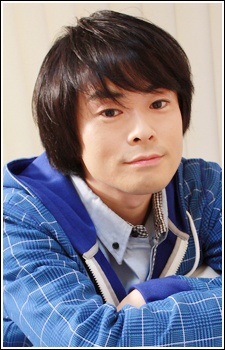
Gintama Movie 2: Kanketsu-hen - Yorozuya yo Eien Nare
Summary: When Gintoki apprehends a movie pirate at a premiere, he checks the camera's footage and finds himself transported to a bleak, post-apocalyptic version of Edo, where a mysterious epidemic called the "White Plague" has ravished the world's population. It turns out that the movie pirate wasn't a pirate after all—it was an android time machine, and Gintoki has been hurtled five years into the future! Shinpachi and Kagura, his Yorozuya cohorts, have had a falling out and are now battle-hardened solo vigilantes and he himself has been missing for years, disappearing without a trace after scribbling a strange message in his journal.
Setting out in the disguise given to him by the android time machine, Gintoki haphazardly reunites the Yorozuya team to investigate the White Plague, and soon discovers that the key to saving the future lies in the darkness of his own past. Determined to confront a powerful foe, he makes an important discovery—with a ragtag band of friends and allies at his side, he doesn't have to fight alone.
[Written by MAL Rewrite]
Description
When Gintoki apprehends a movie pirate at a premiere, he checks the camera's footage and finds himself transported to a bleak, post-apocalyptic version of Edo, where a mysterious epidemic called the "White Plague" has ravished the world's population. It turns out that the movie pirate wasn't a pirate after all—it was an android time machine, and Gintoki has been hurtled five years into the future! Shinpachi and Kagura, his Yorozuya cohorts, have had a falling out and are now battle-hardened solo vigilantes and he himself has been missing for years, disappearing without a trace after scribbling a strange message in his journal.
Setting out in the disguise given to him by the android time machine, Gintoki haphazardly reunites the Yorozuya team to investigate the White Plague, and soon discovers that the key to saving the future lies in the darkness of his own past. Determined to confront a powerful foe, he makes an important discovery—with a ragtag band of friends and allies at his side, he doesn't have to fight alone.
[Written by MAL Rewrite]
Gintama Movie 2: Kanketsu-hen - Yorozuya yo Eien Nare Trailers
Gintama Movie 2: Kanketsu-hen - Yorozuya yo Eien Nare Pictures
Gintama Movie 2: Kanketsu-hen - Yorozuya yo Eien Nare Review
Gintama Movie 2: Kanketsu-hen - Yorozuya yo Eien Nare — When Gintoki apprehends a movie pirate at a premiere, he checks the camera's footage and finds himself transported to a bleak, post-apocalyptic version of Edo, where a mysterious epidemic called the "White Plague" has ravished the world's population. This overview is intentionally spoiler-free and focuses on tone and intent rather than plot specifics.
Thematically, It sits firmly within Action, Comedy, Sci-Fi conventions as a Movie work and has garnered attention (MAL score: 8.9). This work explores character dynamics, tonal shifts, and the interplay between narrative ambition and execution. The story's pacing and tonal choices are crafted to complement the central ideas, often emphasizing atmosphere and emotional truth over explicit exposition. The show's ability to evoke a consistent mood — whether melancholic, exuberant, or contemplative — is a recurring strength, and the scenes are constructed so viewers can infer stakes without needing explicit spoilers.
Characterization is a core pillar here. Protagonists and supporting figures are written with distinct motivations and narrative roles; even when archetypal, the series invests in small behavioral details that make choices feel earned. Character arcs are handled with an eye for gradualism: development often arrives through incremental beats rather than abrupt, expository shifts. The interactions between characters create texture, and relationships are used to illuminate both personal flaws and larger thematic concerns.
On the visual front, production values play a significant role. The animation quality varies by sequence but frequently showcases thoughtful direction and composition. Background art, framing, and color palettes are used deliberately to support tone — quieter scenes favor muted palettes while action or heightened emotional beats employ brighter, more kinetic visuals. Direction choices, such as camera movement and shot selection, often elevate scenes beyond their raw script, creating moments that linger in the viewer's mind.
The soundscape — score, incidental music, and sound design — complements the visual language. Music cues are placed to maximize emotional resonance without manipulating the audience with melodrama; this restraint often leads to more authentic emotional payoff. Sound design punctuates key moments, and when the series leans on silence, those quieter moments are given weight by measured audio choices.
Pacing and structure are handled with craft. Episodes are arranged to build tension and release methodically, and the narrative rarely rushes through important emotional beats. That said, the deliberate pacing may feel slow to viewers who prefer faster plot turnover; the reward is greater nuance and an accumulation of meaning across the series. Accessibility is generally good — one can appreciate surface-level pleasures, while repeat or attentive viewing reveals additional layers.
No title is without flaws. Occasional unevenness in subplots or variable animation across episodes can be distracting. Some tonal shifts might feel abrupt if you expect uniformity; others will argue that those shifts are purposeful. These are worth noting, but they seldom undercut the larger achievements of the work.
In sum, Gintama Movie 2: Kanketsu-hen - Yorozuya yo Eien Nare offers a rich experience for viewers who value character-driven storytelling, considered visual design, and a soundtrack that supports rather than overwhelms. For fans of Action, Comedy, Sci-Fi, this is an especially rewarding watch. It's recommended for those who appreciate layered narratives and artistry in animation, and best approached with patience and attention to nuance.
Characters & Voice Actors

Kagura
Main

Kagura
Main

Kagura
Main

Kagura
Main

Sakata, Gintoki
Main

Sakata, Gintoki
Main

Sakata, Gintoki
Main

Sakata, Gintoki
Main

Shimura, Shinpachi
Main

Shimura, Shinpachi
Main

Shimura, Shinpachi
Main

Shimura, Shinpachi
Main

Catherine
Supporting

Catherine
Supporting

Catherine
Supporting

Elizabeth
Supporting

Elizabeth
Supporting

Elizabeth
Supporting

Elizabeth
Supporting

Enmi
Supporting
Staff

Hieda, Susumu
Producer

Higuchi, Hiromitsu
Producer

Fujita, Youichi
Director, Episode Director, Storyboard

Kobayashi, Katsuyoshi
Sound Director

Kawamura, Tomoyuki
Episode Director, Storyboard

Miyake, Kazuo
Episode Director

Miyawaki, Chizuru
Episode Director, Storyboard

Sasaki, Shinobu
Episode Director

Minami, Yasuhiro
Storyboard

Nishizawa, Susumu
Storyboard

SPYAIR
Theme Song Performance

Abe, Naoto
Key Animation

Abe, Chiaki
Key Animation

Abe, Shingo
Key Animation

Adachi, Satoshi
Planning

Adachi, Yuuki
In-Between Animation

Akimoto, Katsumi
Background Art

Akita, Manabu
Key Animation

Asai, Akito
Key Animation

Audio Highs
Music